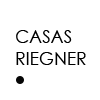Paisajes Nacionales, Dibujos y Pinturas
The word landscape implicitly points to the presence of a subject who observes and to an object that is observed. Beatriz González Paisajes Nacionales Dibujos y Pinturas [Beatriz González National Landscapes: Drawings and Paintings] reveals the sensitive gaze of the artist, who, based on her thorough and critical observation of events that have marked the complex reality of her country, creates a new body of work that evidences the existence of the four natural elements. Moving away from a pure or geographical representation of fire, air, water, and earth, the artist opts for the creation of compositions that interweave nature and human tragedy. The careful selection of images taken from graphic journalism—added to hundreds of clippings that already constitute a large visual archive created by González towards the end of the 1960s—indicates a unique perception of the Colombian reality contained in images that, schematically organized and insistently reiterated, become symbols that are difficult to erase from memory.
Paisajes nacionales: Beatriz González, pinturas y dibujos [National Landscapes: Beatriz González, paintings, and drawings] is the second solo exhibition of the artist at Casas Riegner. It gathers unpublished paintings and drawings in which undefined silhouettes of human figures in dramatic positions predominate—mostly alluding to recent tragedies, where the existence of the four elements is manifest: fire is represented as a burnt village, earth is the grave of the deceased, air is environmental pollution that results from coal mining in the Guajira, and water are the children who carry water buckets.
Since 1983, González has resorted to the reiteration of images extracted from the press as a visual strategy to combat forgetfulness. Returning to the format of Zócalo de la tragedia [Foundation of Tragedy] and Zócalo de la comedia [Foundation of Comedy] (1983), González creates a new series that explores the theme of grief, in which images of women waiting for news of their loved ones are repeated until they become the symbols of waiting and uncertainty.
The careful and constant observation of her social, political, and cultural context—captured by the artist on mediums as diverse as canvases, furniture, found objects, tapestry and curtains since the end of the 1960s—acquires a new dimension in Paisajes Nacionales [National Landscapes]. The natural elements intermingled with human tragedy are visualized with forcefulness and emotion, managing thus to remain immune to collective amnesia.
Paula Bossa











